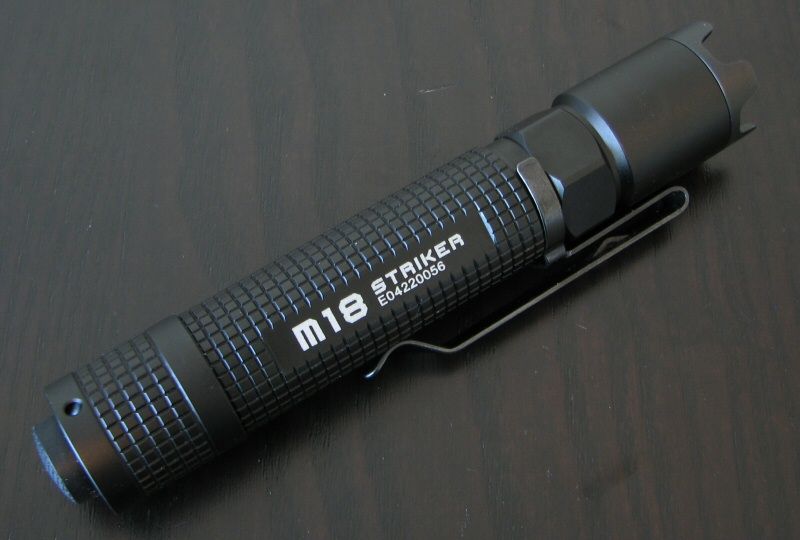
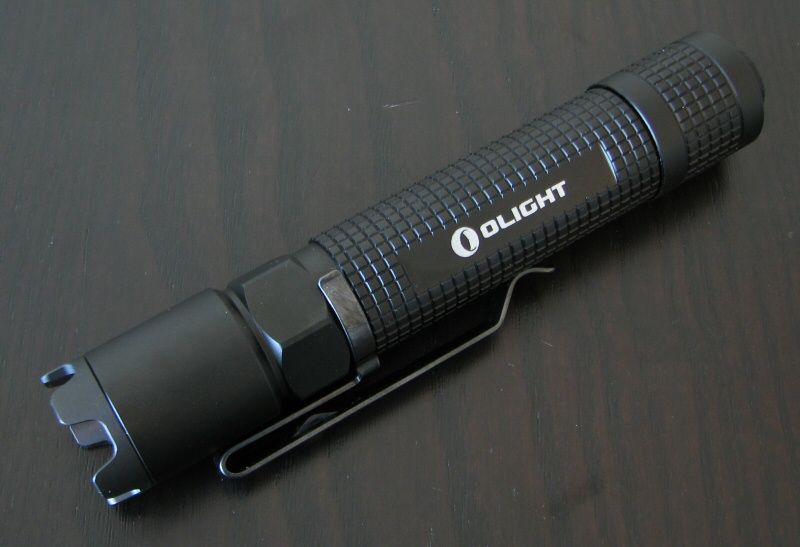
The M18 Striker is a new 1x18650, 2xCR123A/RCR light from Olight that is clearly designed for the "tactical" crowd.
As an aside, it's odd that Olight that choose to re-use the "M18" model number. :thinking: This may create some confusion for the earlier M18 Maverick model, which uses the same batteries but has a different dual-switch interface.
Manufacturer Reported Specifications:
(note: as always, these are simply what the manufacturer provides – scroll down to see my actual testing results).
- LED: 1 x Cree XM-L2 CW
- Two brightness levels from 150 to 800 lumens, plus a strobe mode through tailcap switch
- Stainless-steel strike bezel that serves as a last resort defensive option
- Easily accessible lock-out feature with a half turn of the tailcap
- Removable stainless-steel pocket clip
- Waterproof up to two meters
- Aircraft-grade aluminum body with anti-scratch type III hard anodizing
- Compatible with CR123A, RCR123A and 18650 batteries
- Overheat protection ramps down initial output after one minuteLENS Tough ultra-clear tempering glass with anti-reflective coating
- DIMENSIONS: Length: 5.2 in / 132.5mm, Bezel Diameter: 0.9 in / 23mm
- Weight: 2.0 oz / 57.5 g (excluding batteries)
- BODY MATERIAL: Aircraft-grade aluminum body with anti-scratch type III hard anodizing
- BATTERY SOURCE: 2 x CR123A or 2 x RCR123A or 1 x 18650
- WARRANTY: Olight's 5 Year warranty.
- ACCESSORIES: Lanyard x 1, Silicon rubber boot x 1, Spare O-rings x 2, CR123A/RCR123A Battery Magazine x 1
- MSRP: $60
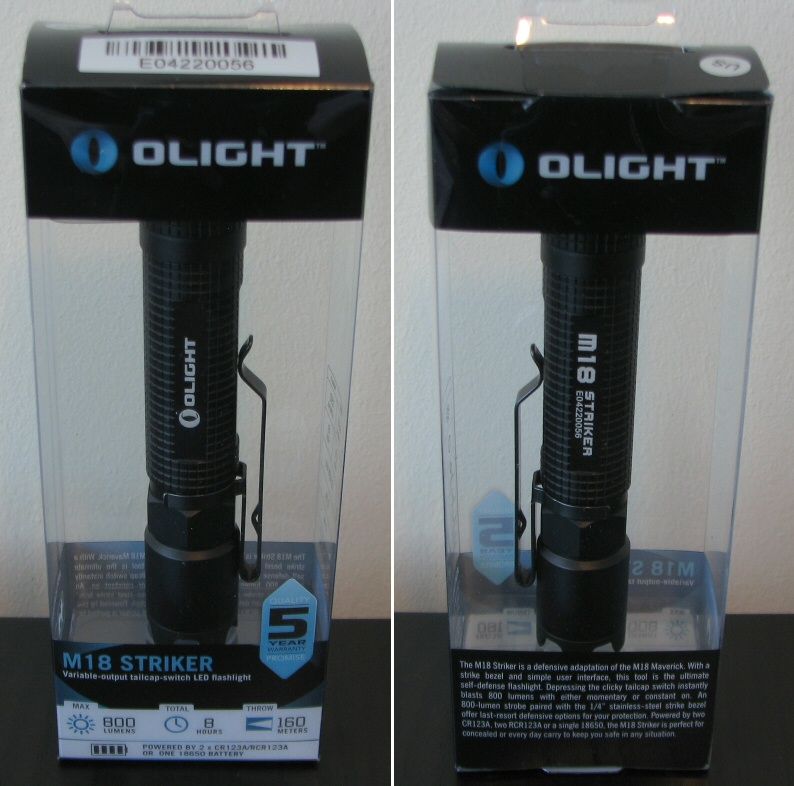
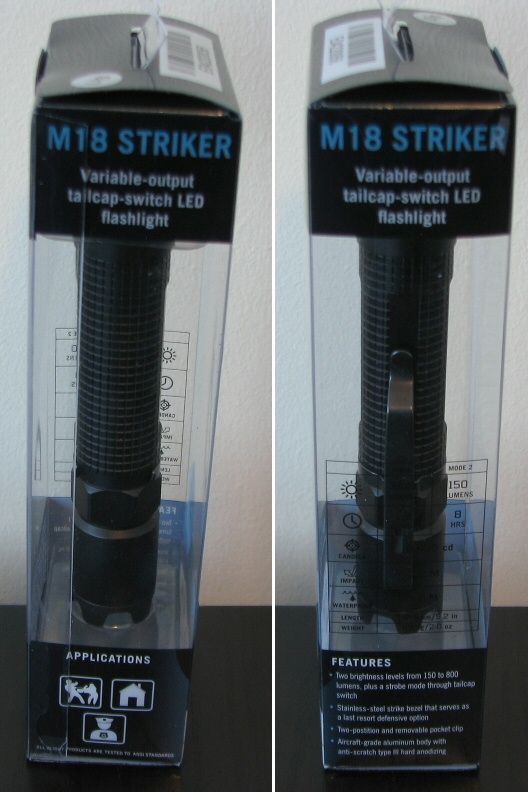
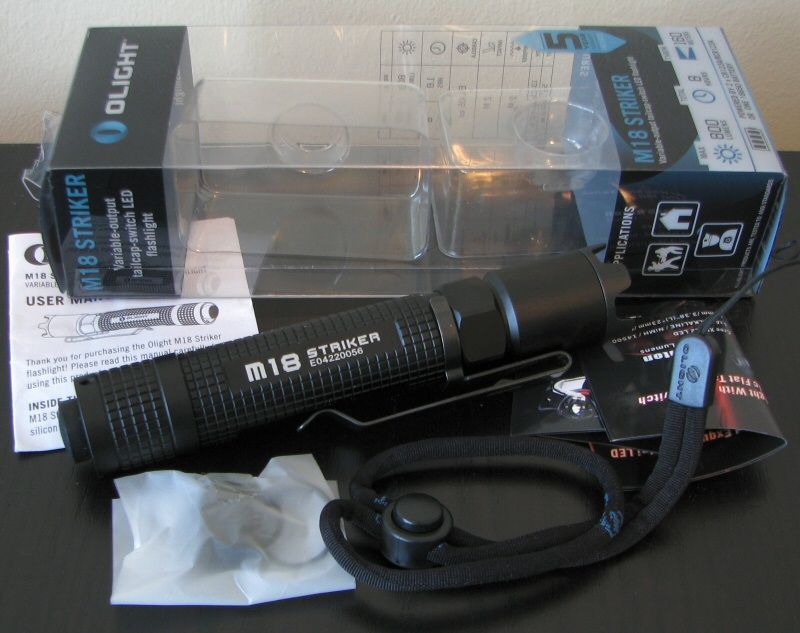
The retail display packaging is identical to the other recent Olight lights (and bears a close resemblance to the recent Foursevens lights). Specs and performance are printed on the clear plastic box. Inside, you get the light with reversible pocket clip attached, good quality wrist lanyard, extra o-rings, replacement tailswitch boot cover, product insert and manual.
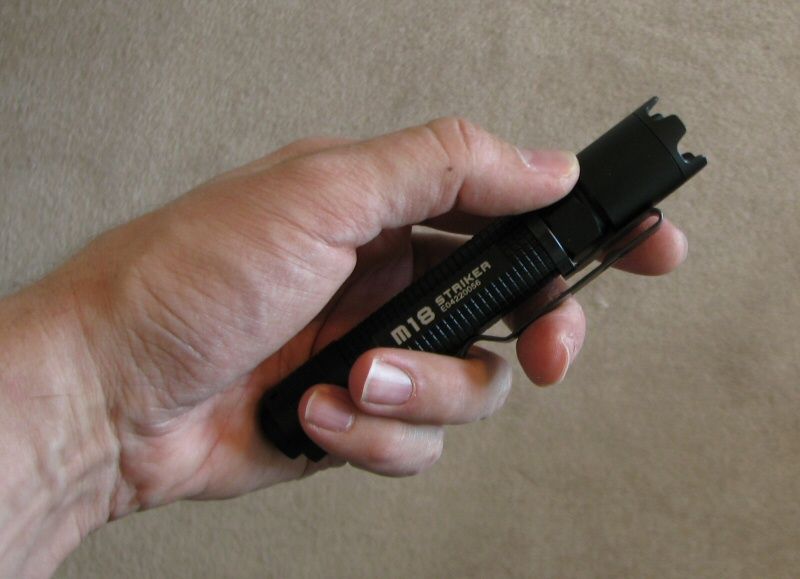
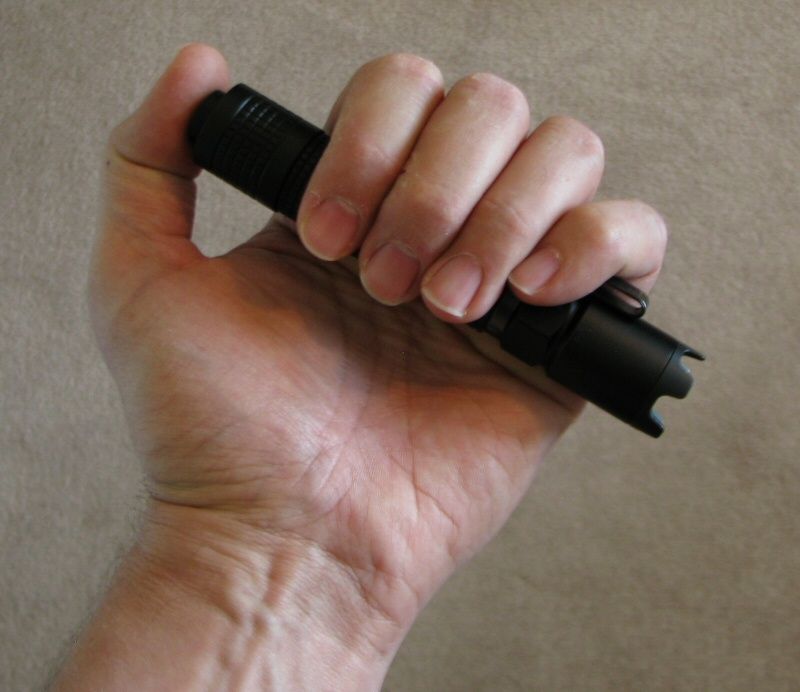
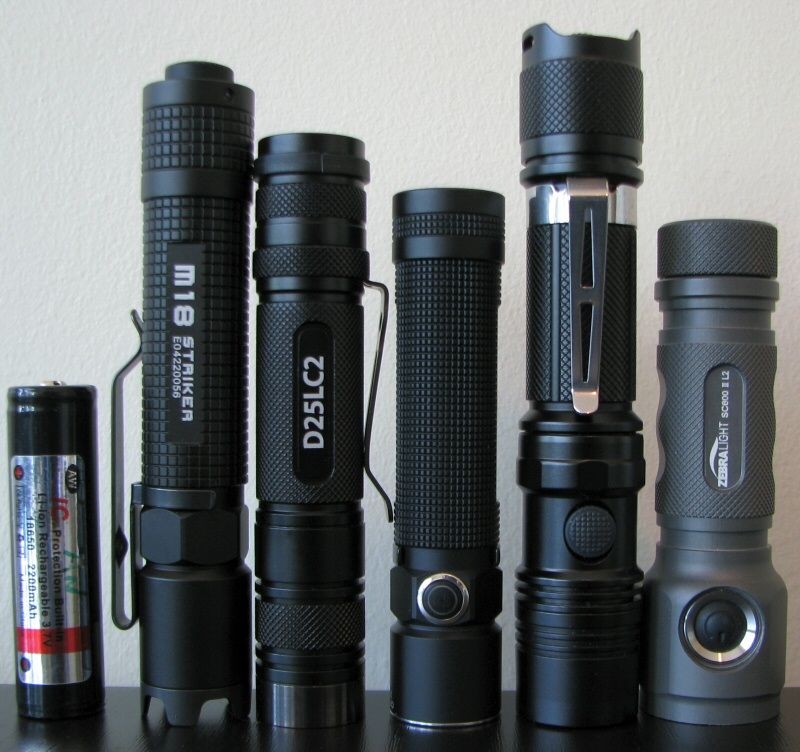
From left to right: AW Protected 18650 2200mAh; Olight M18; Eagletac D25lC2; Olight S20-2013, Thrunite TN12-2014, Zebralight SC600-II.
All dimensions directly measured, and given with no batteries installed:
Olight M18: Weight: 60.0g, Length: 132.7mm, Width (bezel): 30.0mm
Eagletac D25LC2: Weight: 50.0g, Length: 116.3mm, Width (bezel): 22.5mm
Foursevens Quark Q123-2 X (Regular tailcap): Weight: 44.6g, Length: 112.7mm, Width (bezel) 22.0mm
Jetbeam PC20: Weight: 60.0g, Length: 127.5mm, Width (bezel): 22.6mm
Olight S20 (2013, XM-L2): Weight: 52.4g, Length: 106.5mm, Width (bezel): 23.1mm
Skilhunt DS20: Weight: 53.8g, Length: 110.0mm, Width (bezel): 24.0mm
Sunwayman C20C: Weight 57.6g, Length: 104.8mm. Width (bezel): 25.6mm
Thrunite TN10: Weight: 154.7g, Length: 145.5mm, Width (bezel): 35.1mm
Zebralight SC600: Weight 87.2g, Length: 107.8mm, Width (bezel) 29.7mm
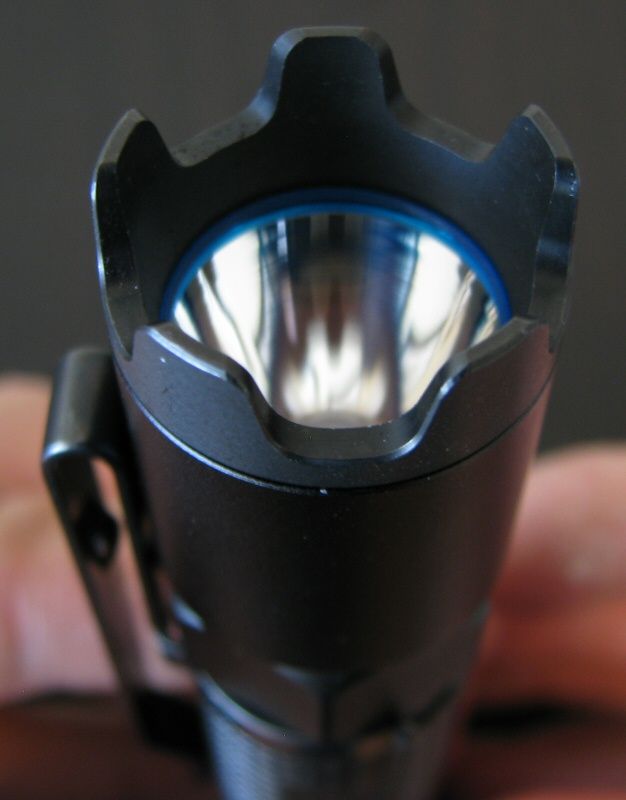
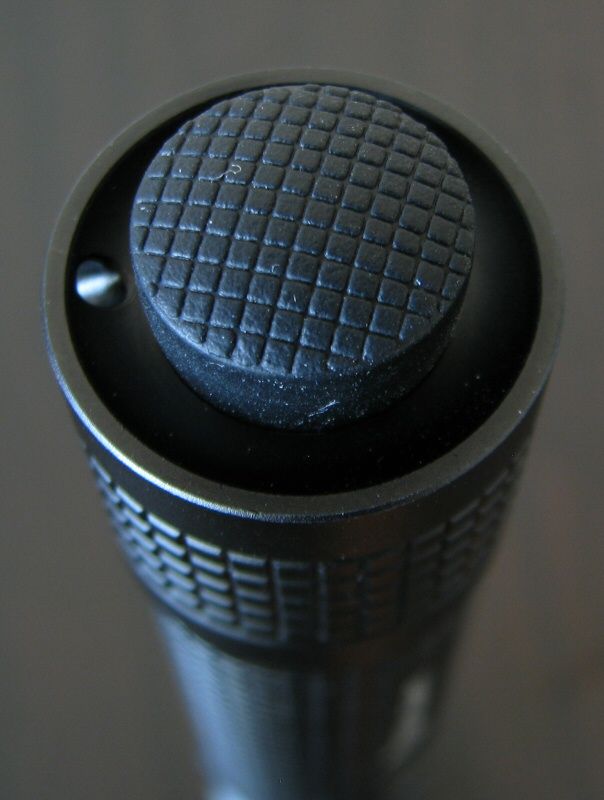
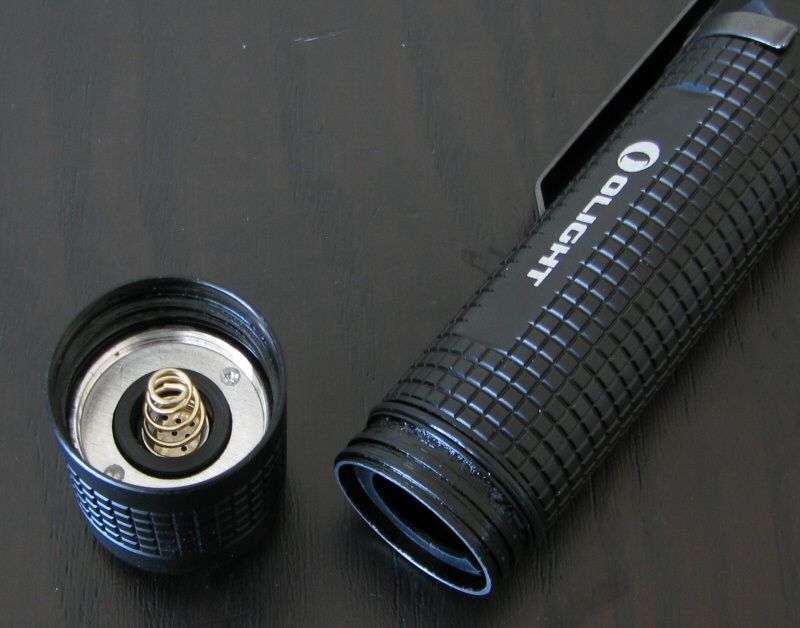
Physically, the M18 is similar in body dimensions to the Olght S20 – except the M18 is much longer due to the tailcap forward clicky switch and projecting crenelated bezel. The M18 lacks knurling as such, and instead has a thicker raised checkered pattern than the S20. Anodizing is a matte black, and body labels are bright white and clear. With the removable (and reversible) pocket clip, I would say overall grip is pretty good.
The obvious stand-out feature of the design is the extended set of crenelations on the black stainless steel bezel. This is clearly intended to serve as a strike implement. As we will see below, it also affects the spillbeam pattern.
Screw threads are anodized at the tail end of the light for lock-out. Note there are only a couple of threads (square-cut). There is a protruding forward physical clicky switch in the tail, with typical feel. See below for a discussion of the UI.
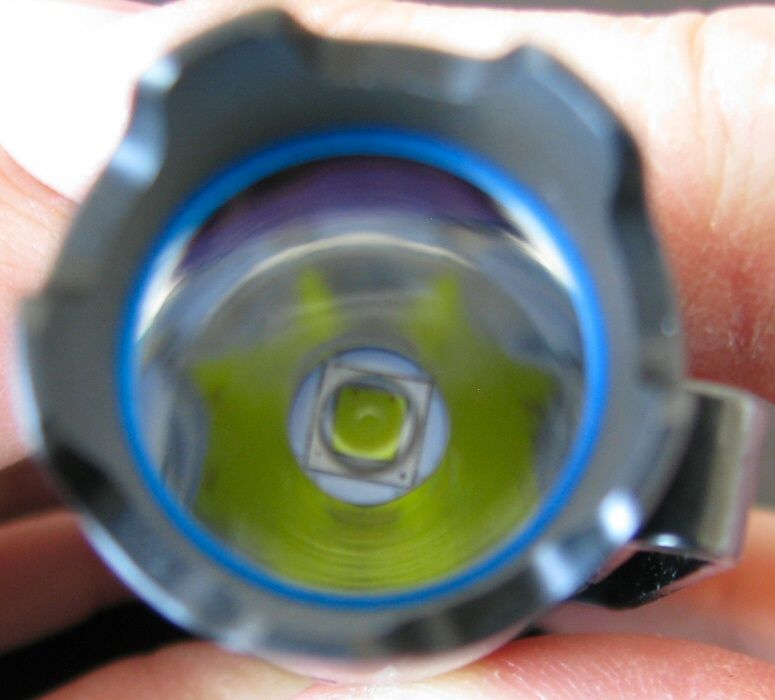
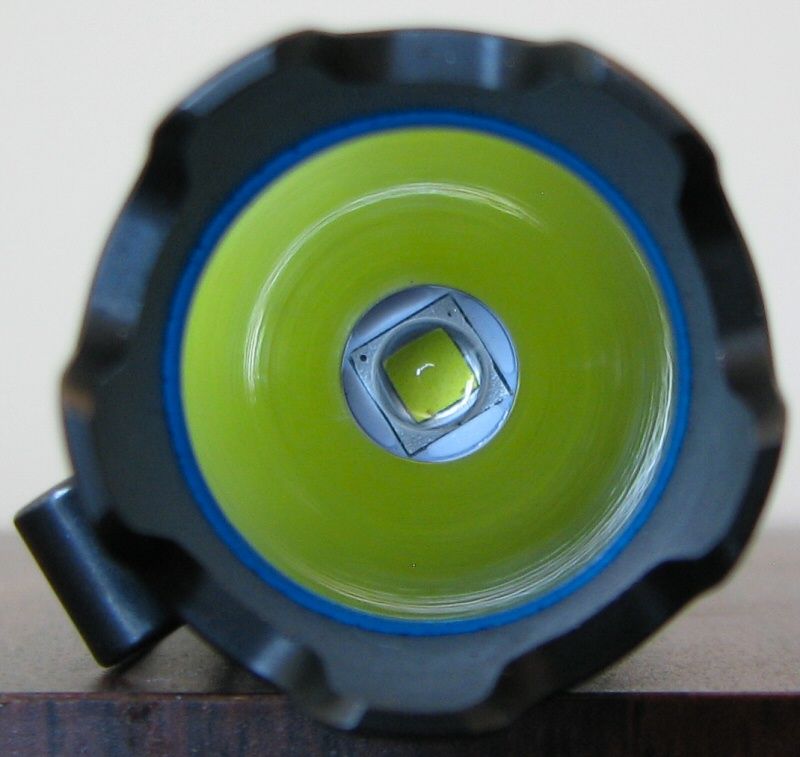
The M18 has a cool white XM-L2 emitter, well-centered on my sample. Reflector is generally smooth, but not overly deep. Due to raised crenelated bezel, you can expect significant artifacts in the spillbeam (scroll down for beamshots). As also common on recent Olight lights, there is a blue o-ring at the bezel that glows for a period of time after being illuminated.
User Interface
Turn the light on in the default Hi mode by either soft-press (i.e., press and hold) of the tail switch for momentary mode, or click for locked on.
The Lo mode and strobe mode are only accessible from Off, using repeated presses of the switch. To access Lo, you need to do two rapid soft-presses of the switch in under a second (or alternatively, a quick soft-press and click for locked on Lo). To access Strobe, do three rapid soft-presses (or two soft-presses and click for locked on Strobe).
The tailcap threads are anodized, so you can physically lock out the light. Alternatively, you could use the tailcap as a twisty (i.e., with the switch in the clicked on position, you could control output by tighten-loosen twists of the switch).
Video:
For information on the lights, including the build and user interface, please see my video overview:
As with all my videos, I recommend you have annotations turned on. I commonly update the commentary with additional information or clarifications before publicly releasing the video.
PWM/Strobe
As with other Olight models, the M18 is current-controlled – there no indication of pulse width modulation on either mode. :thumbsup:
There was no circuit noise observed on my M18 sample on any of the constant output levels.
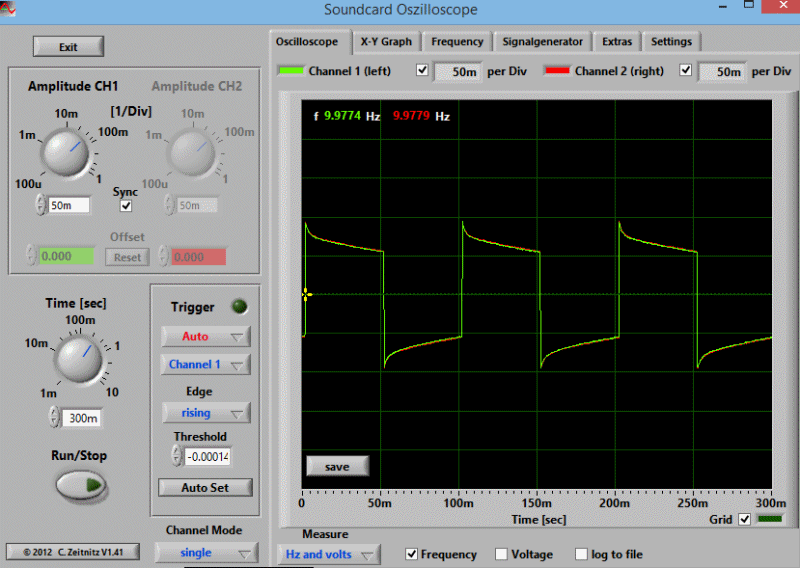
The M18 has a fairly typical strobe frequency of 10 Hz.
No Standby Drain
As the switch is a physical clicky, there is no standby current drain when off.
Beamshots
For white-wall beamshots below, all lights are on Max output on an AW protected 18650 battery. Lights are about ~0.75 meter from a white wall (with the camera ~1.25 meters back from the wall). Automatic white balance on the camera, to minimize tint differences.
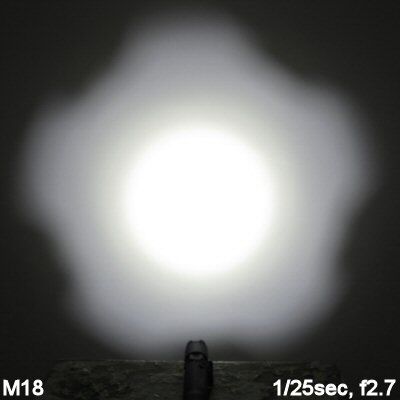
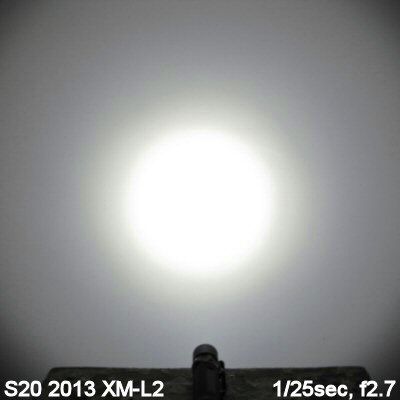
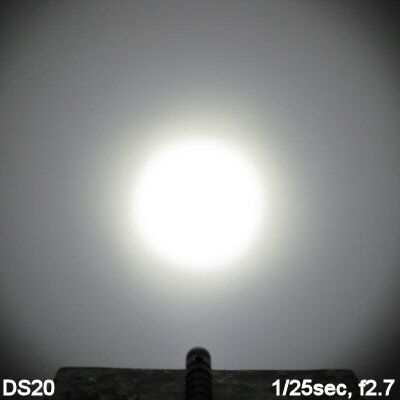
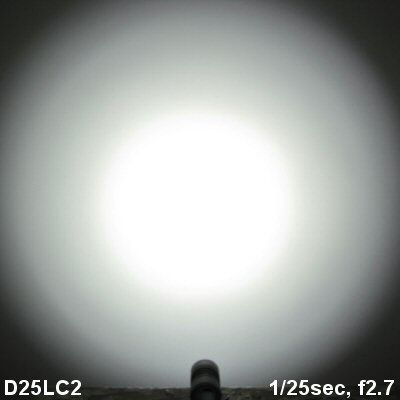
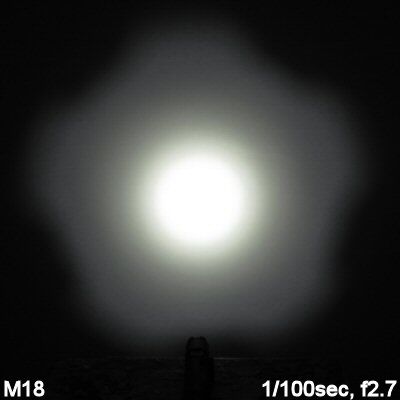
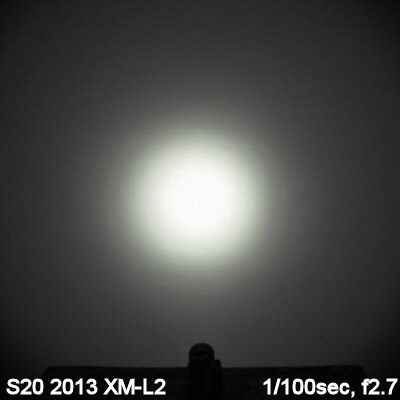
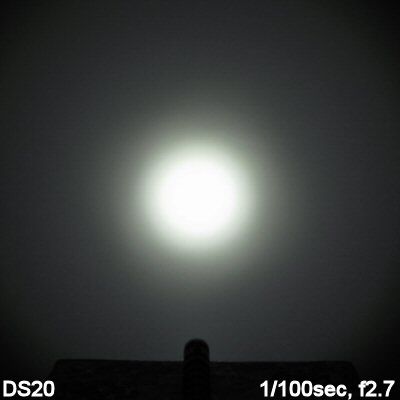
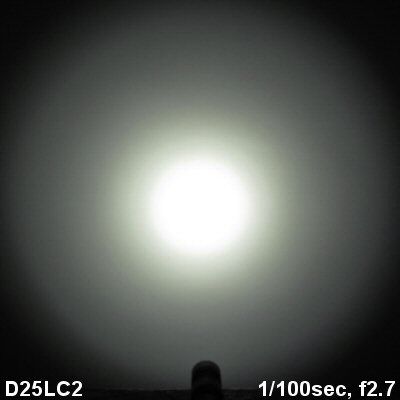
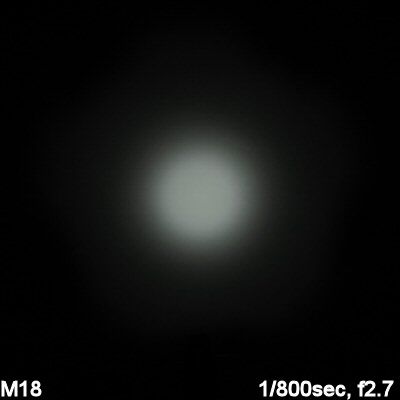
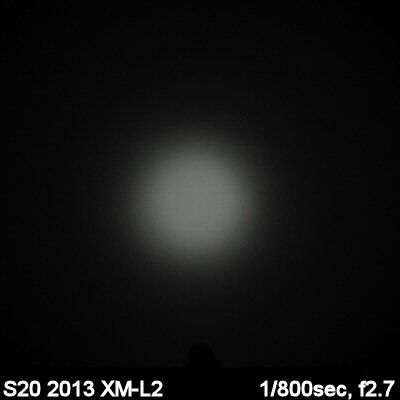
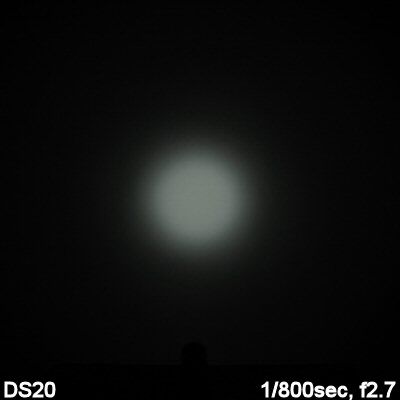
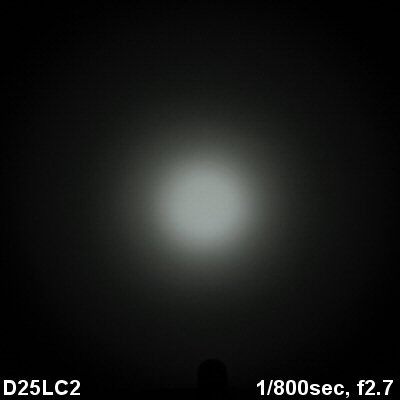
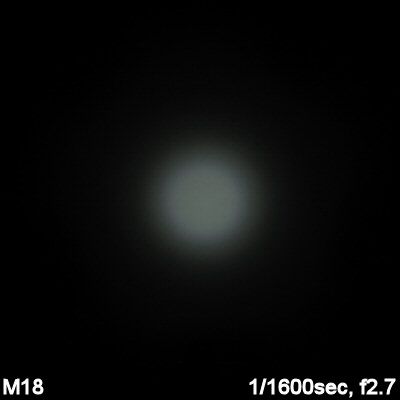
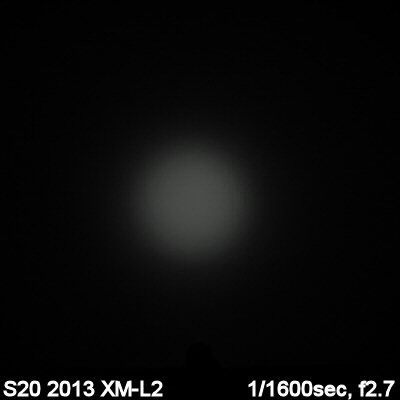
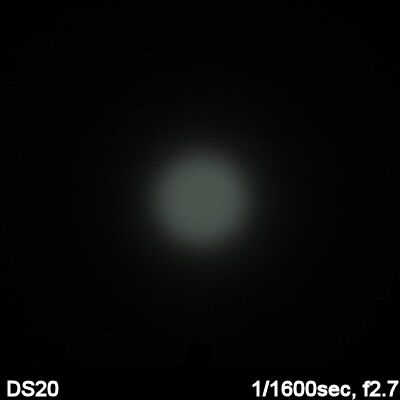
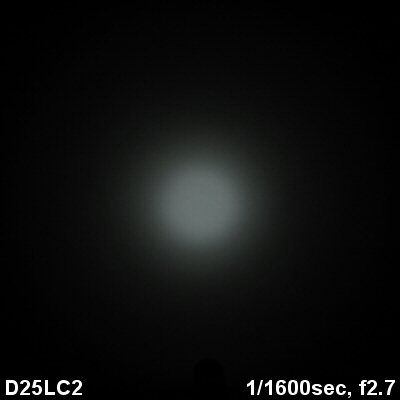
As you can see, the raised crenalations cause significant spillbeam effects. Overall output and throw are reasonable for this size and class light.
Testing Method:
All my output numbers are relative for my home-made light box setup, as described on my flashlightreviews.ca website. You can directly compare all my relative output values from different reviews - i.e. an output value of "10" in one graph is the same as "10" in another. All runtimes are done under a cooling fan, except for any extended run Lo/Min modes (i.e. >12 hours) which are done without cooling.
I have devised a method for converting my lightbox relative output values (ROV) to estimated Lumens. See my How to convert Selfbuilt's Lightbox values to Lumens thread for more info.
Throw/Output Summary Charts:
My summary tables are reported in a manner consistent with the ANSI FL-1 standard for flashlight testing. Please see http://www.flashlightreviews.ca/FL1.htm for a discussion, and a description of all the terms used in these tables. Effective July 2012, I have updated all my Peak Intensity/Beam Distance measures with a NIST-certified Extech EA31 lightmeter (orange highlights).
NOTE: Sorry, these tables and figures should all say "M18 Striker", to differentiate this model from the M18 Maverick (which I haven't tested).
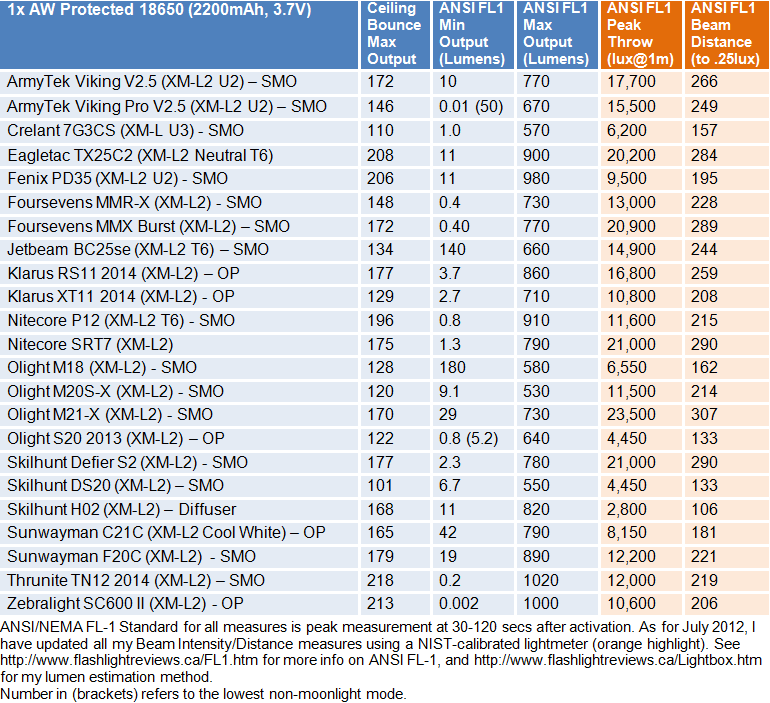
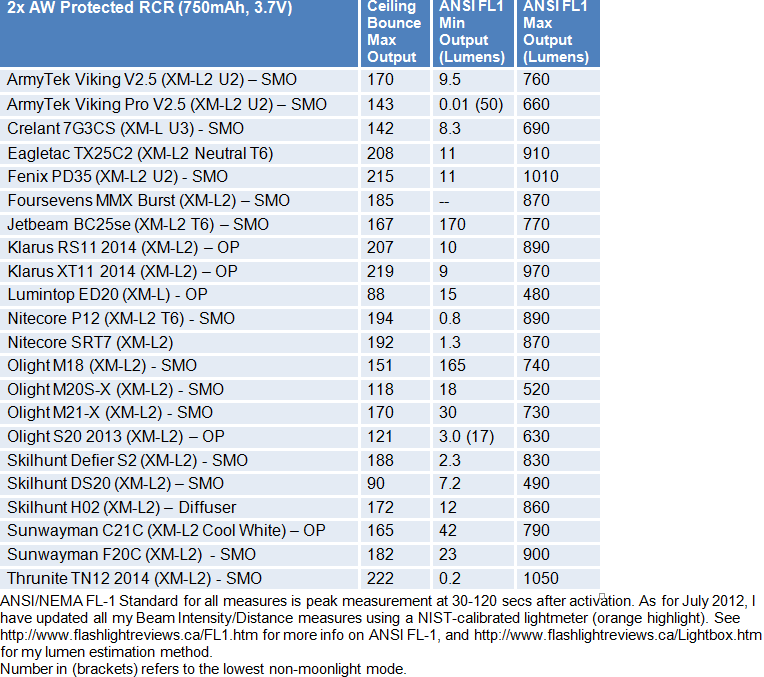
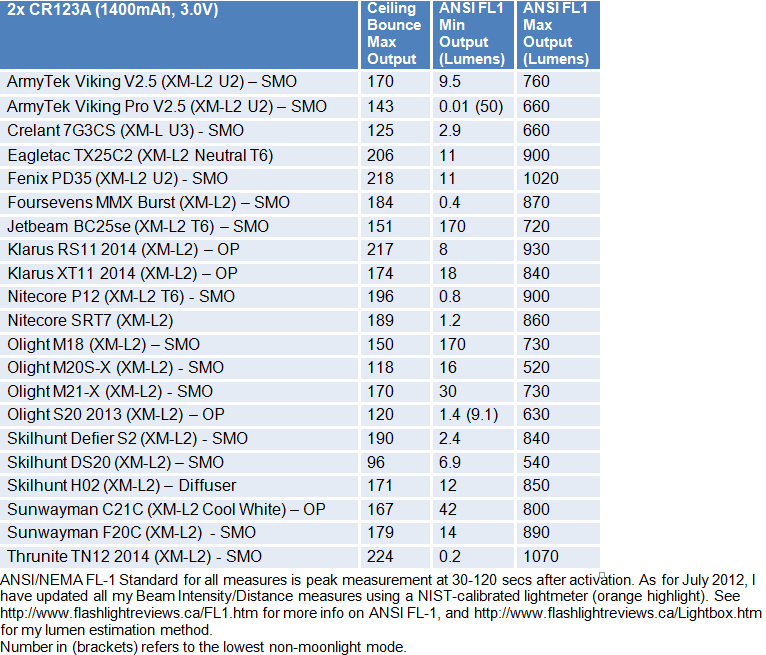
Max output on my M18 Striker sample is lower than the rated specs. To better compare, here is a table of estimated lumen outputs:
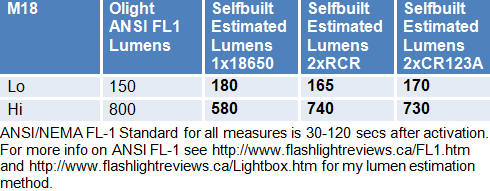
The 2x configurations are closer to the rated spec on Hi, whereas 1x18650 is considerably lower. There is less variation on the Lo level, as you would expect.
Runtimes
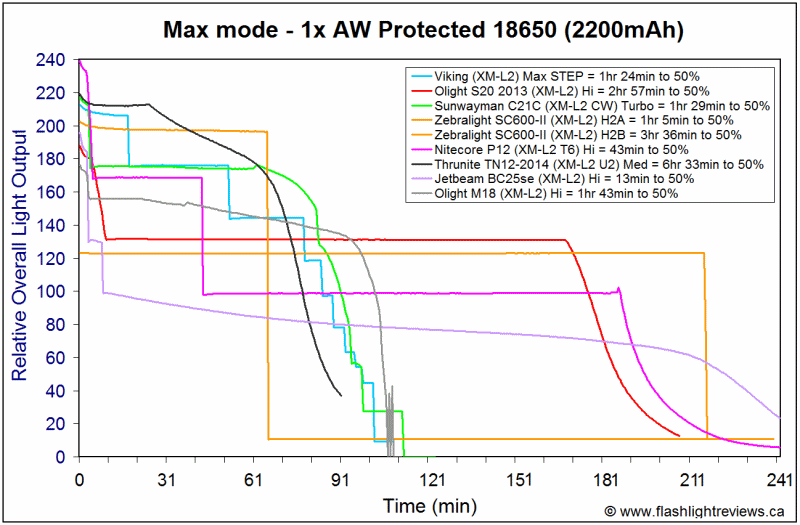
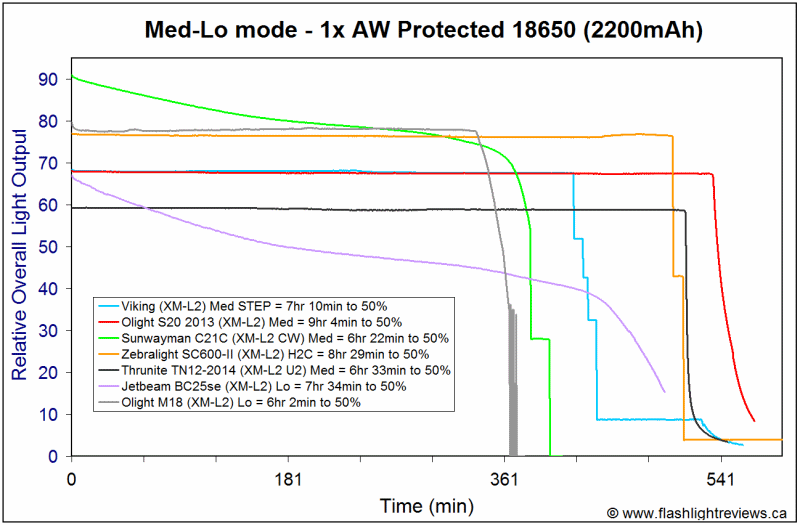
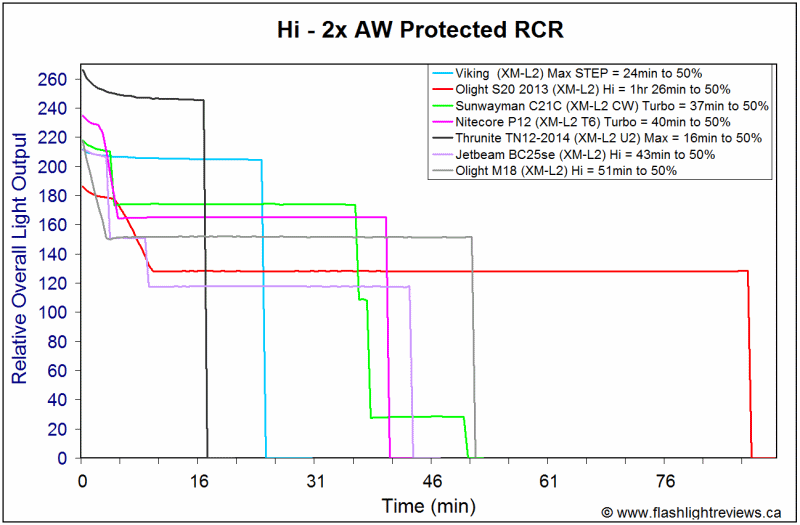
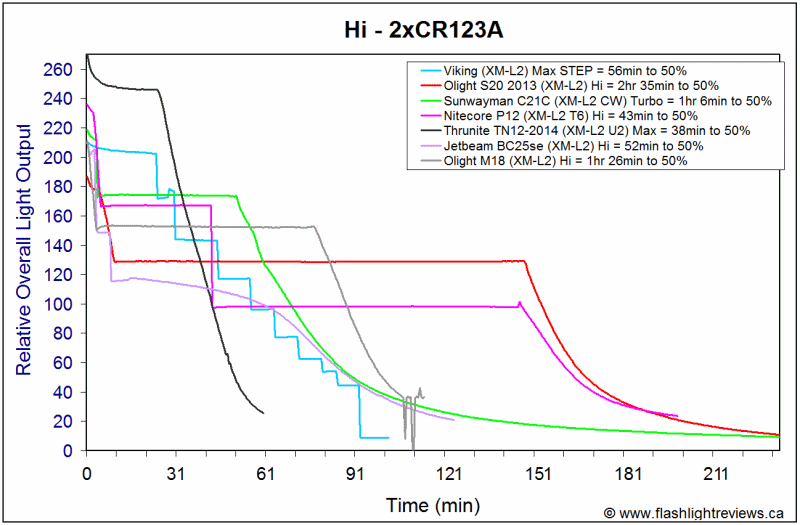
The M18 Striker shows a fairly typical current-controlled circuit. Overall output/runtime efficiency is good on both levels (although the "Lo" mode here is really more of a Medium). The light tries to maintain flat stabilization as long as possible. There are no step-downs on Hi.
Potential Issues
The raised crenalations on the bezel produce visible effects on the spillbeam (which is narrower than typical).
The light is only two output levels (plus strobe), and lacks a true "Lo" mode.
The light cannot tailstand.
User interface is unusual, in that Lo and Strobe are only accessible from Off by repeated presses of the switch. Use of repeated flashes of the tailcap for these modes means that this light would not be suitable for momentary signaling (i.e., Morse code).
Preliminary Observations
The M18 Striker is a bit of a departure for Olight. The M18 is clearly designed for the more "tactical" crowd, although with an unusual interface.
Honestly, I am not sure how "tactical" folks will find this interface. Although straightforward once you know the trick, it is not intuitive to the average user that Lo or strobe are only accessible by repeated presses from Off (i.e., and that you have to go through Hi first). I would think if you want a true tactical interface, you would want to preserve momentary signaling. :shrug: It is possible to preserve a tactical interface with two modes, but you would have to use something like the Surefire two-stage tactical tailcap. Of course, there may be patent issues preventing other makers from easily using that interface.
I don't know if there is a low-profile bezel available for this light. The stock highly crenelated bezel here really limits the general applicability of this light (given its significant effects on the spillbeam pattern). :shrug:
Similarly, the lack of a true Lo mode will be an issue for the general user. I may be dating myself here, but I can remember a time when these sorts of "Lo" lumen levels (i.e. ~150-200) were actually the Hi modes of LED lights.
Output/runtime performance is good on the light, in keeping with a current-controlled circuit.
The M18 Striker is really a specialized light, likely to only be of interest to a subset of flashlight enthusiasts. If you are looking for a general purpose flashlight, there are plenty of other models to consider (including several good Baton and Maverick choices from Olight). For those of you who are interested in this light for its intended function, I strongly recommend you carefully review the user interface section of this review to ensure that this light matches your needs and expectations
----
M18 Striker was supplied by Going Gear on behalf of Olight for review.

